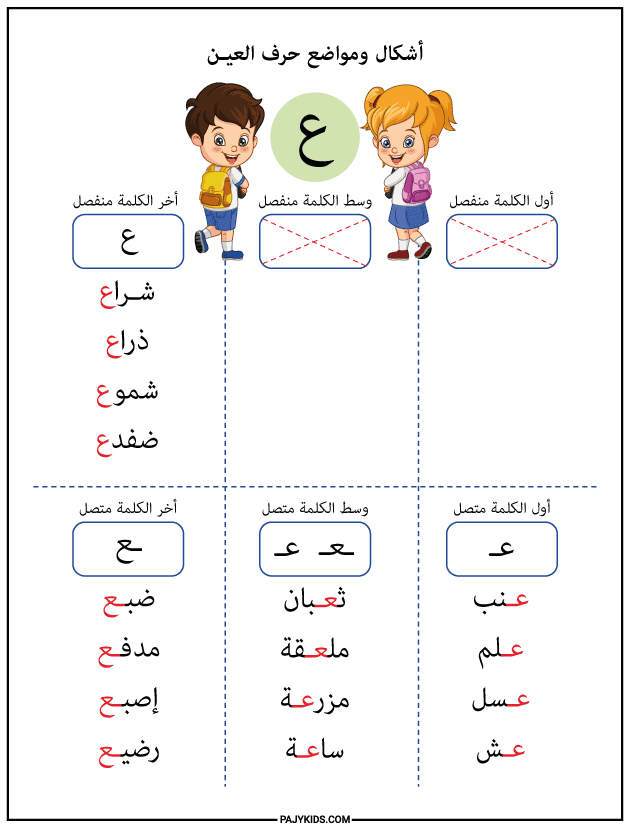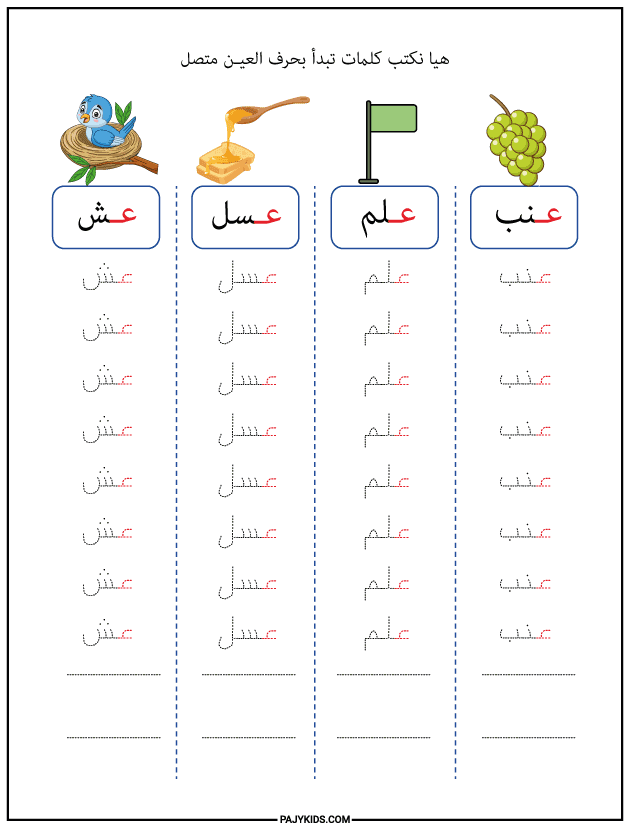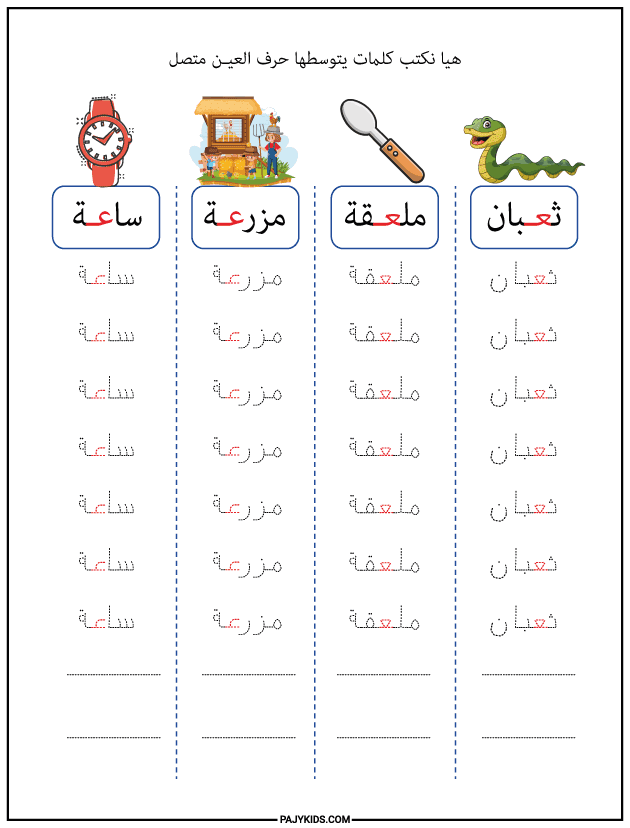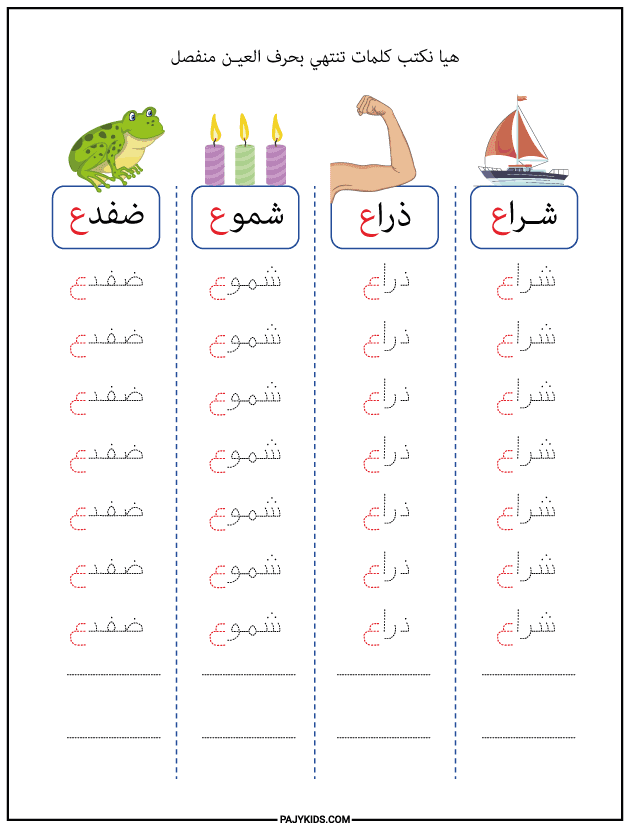The letter ʿAyn (ع) is one of the most distinctive letters in the Arabic language. It is characterized by its curved shape and unique guttural sound. The shape of the letter changes depending on its position within a word, which makes it essential for students to learn the different shapes of the letter ʿAyn in order to master accurate reading and writing. In this lesson, we will explore how the letter ʿAyn appears at the beginning, middle, and end of words—both connected and disconnected—along with illustrative examples to help reinforce understanding.
Interactive Exercises on the Shapes of the Letter ʿAyn

- The Shape of the Letter ʿAyn at the Beginning of a Word
When ʿAyn appears at the beginning of a word, it connects only to the letter that follows it and is written like this: “عـ”.
Examples: ʿAṣfūr (bird), ʿIlm (flag), ʿIsh (nest).
In this position, the letter appears open from the top and is written with a slight curve on the right side and a small horizontal stroke. This is one of the clearest and most recognizable shapes of the letter ʿAyn for beginners.

- The Shape of the Letter ʿAyn in the Middle of a Word
When ʿAyn appears in the middle of a word, it connects to the letter before and after it, and is written like this: “ـعـ”.
Examples: Thuʿbān (snake), Milʿaqah (spoon), Mazraʿah (farm).
In this position, the letter integrates smoothly with the surrounding letters. The curved shape of ʿAyn remains clear in the center, aiding students in distinguishing the shapes of the ʿAyn from similar-looking characters.

- The Shape of the Letter ʿAyn at the End of a Word (Connected)
When ʿAyn appears at the end of a word and is connected to the preceding letter, it is written as: “ـع”.
Examples: Ḍabʿ (hyena), Madfaʿ (cannon), Iṣbaʿ (finger).
This shape extends along the writing line while maintaining its lower curve. It is among the most frequently used shapes of the ʿAyn in everyday writing.

- The Shape of the Letter ʿAyn at the End of a Word (Isolated)
If ʿAyn appears at the end of a word following a letter that does not connect to it, it is written in its isolated form: “ع”.
Examples: Sharāʿ (sail), Dhirāʿ (arm), Shumūʿ (candles).
In this case, the letter appears on the line in its full, independent form, retaining its natural curve. This helps readers easily recognize and understand the shapes of the letter ʿAyn.

Mastering the shapes of the letter ʿAyn significantly enhances Arabic handwriting skills and improves visual distinction between similar letters. Regular practice in writing the letter in its various forms boosts both reading fluency and writing accuracy, especially during early learning stages.